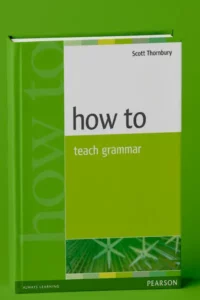How to Teach Grammar has been written for teachers of English who are curious or confused or unconvinced about the reaching of grammar. They may be in training, relatively new to the job. or very experienced.
How to Teach Grammar
Grammar teaching has always been one of the most controversial and least understood aspects of language teaching. Few teachers remain indifferent to grammar and many teachers become obsessed by it. This book attempts to shed light on the issues, but it is essentially a book about practice, about how, and the bulk of the book explores a range of grammar teaching options.
Chapter 1 contains a brief overview of what grammar is, and Chapter 2 addresses the pros and cons of grammar instruction. The sample lessons that comprise the rest of the book have been chosen both to represent a range of teaching approaches, and also as vehicles for the teaching of a representative selection of grammar items — the sort of items that any current coursebcok series will include.
Each sample lesson is followed by a discussion of the rationale underpinning it, and an evaluation of it according to criteria that are established in Chapter 2.11 is important to bear in mind that each lesson description is simply that: a description.
The lessons are not meant to represent an ideal way of teaching grammar: there are as many different ways of teaching grammar as there are teachers teaching it, and it is not the purpose of this book to promote any one particular method or approach over another.
Rather, the purpose is to trigger cycles of classroom experimentation and reflection, taking into account the features of every individual teaching situation. As the Rule of Appropriacy (see Chapter 10) puts it: Interpret any suggestions according to the level, needs, interests, expectations and learning styles of your students.
This may mean giving lot of prominence to grammar, Of it may mean never actually teaching grammar — in an up-front way — at all. The Task File at the back of the book comprises a number of tasks relevant to each chapter. They can be used as a basis for discussion in a training context, or for individual reflection and review. A Key is provided for those tasks that expect specific answers.


